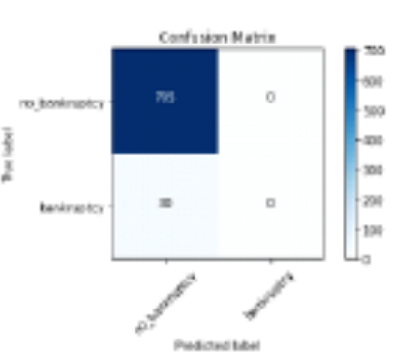


Indian Journal of Science and Technology
Year: 2024, Volume: 17, Issue: 4, Pages: 373-385
Original Article
Sasmita Manjari Nayak1, Minakhi Rout1*
1School of Computer Engineering, KIIT Deemed to be University, Bhubaneswar, Odisha, India
*Corresponding Author
Email: [email protected]
Received Date:20 March 2023, Accepted Date:14 December 2023, Published Date:22 January 2024
Background: This study focuses on the crucial task of predicting bankruptcy within the framework of contemporary economics. It is essential to construct trustworthy and solid models in order to accomplish this. Objective s: The main goal is to address the intricacies involved in predicting bankruptcy by putting forth models that can manage scenarios with a high concentration of outliers and data imbalances. Methods: We use a Generative Adversarial Network (GAN) to synthesise data in order to address data imbalance. Then, we deal with outliers using six different methods: z-score normalisation, isolation forest, one-class SVM, local outlier factor, elliptical envelope, and interquartile range (IQR). Two different bankruptcy datasets are subjected to rigorous application of these suggested models, and their performance is carefully compared. Findings: Compared to the other three models, the GAN-Adaptive Neuro-Fuzzy Inference System (ANFIS) model outperforms the others in terms of bankruptcy prediction. This model is remarkably resilient to outlier data; regardless of the use of outlier handling approaches, its predicted accuracy does not change. Novelty & Applications: The innovation resides in the introduction of ANFIS models based on GANs, which are explored in the field of bankruptcy dataset prediction that is tainted by outliers. Furthermore, although a number of outlier handling strategies have been investigated in earlier research, our study is a ground-breaking attempt to pinpoint the best strategies for enhancing bankruptcy prediction with hybrid ANFIS models.
Keywords: Bankruptcy, Feature Selection (FS), GAN (Generative Adversarial Network), Adaptive NeuroFuzzy Inference System (ANFIS), Outlier handling (OH)
© 2024 Nayak & Rout. This is an open-access article distributed under the terms of the Creative Commons Attribution License, which permits unrestricted use, distribution, and reproduction in any medium, provided the original author and source are credited. Published By Indian Society for Education and Environment (iSee)
Subscribe now for latest articles and news.